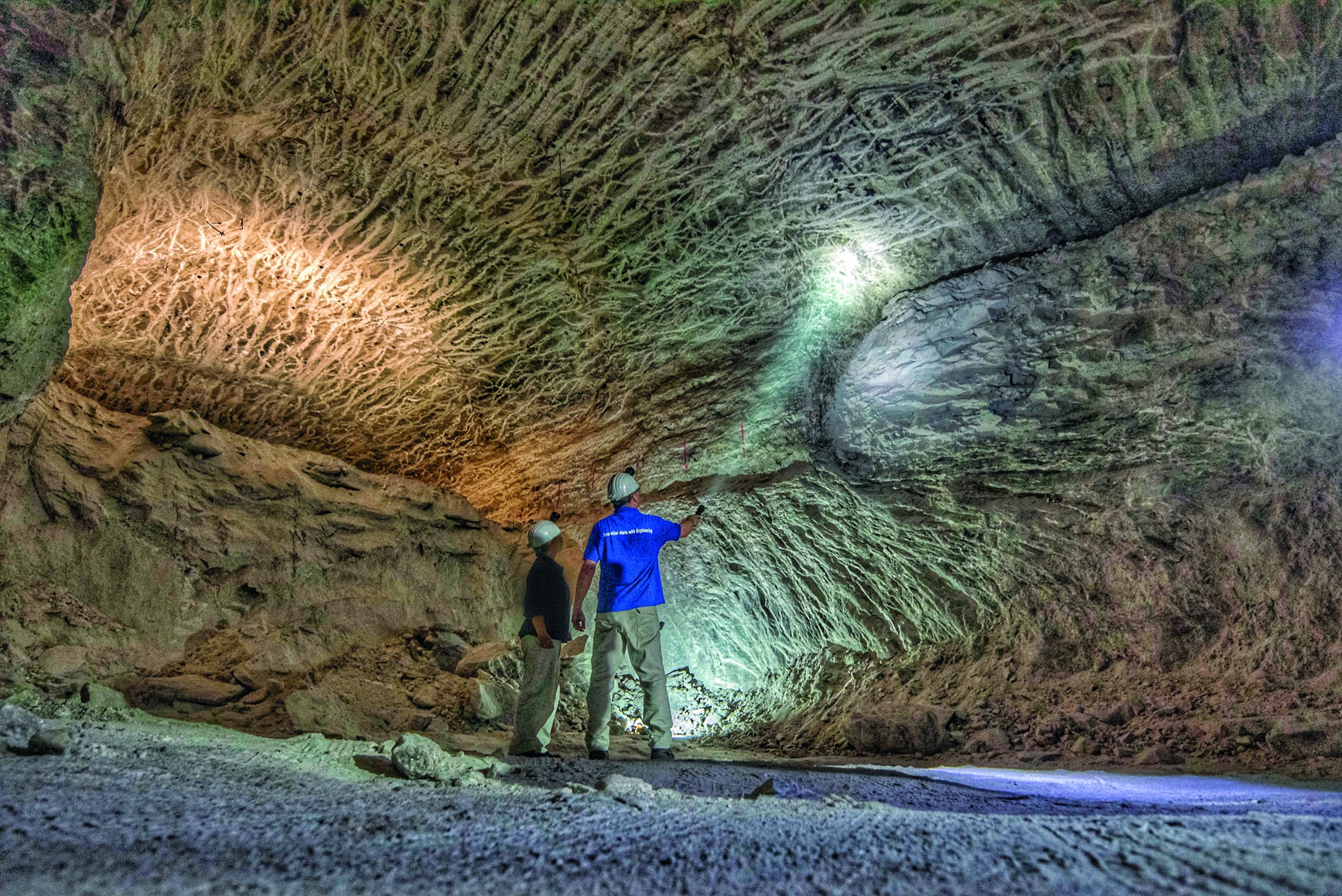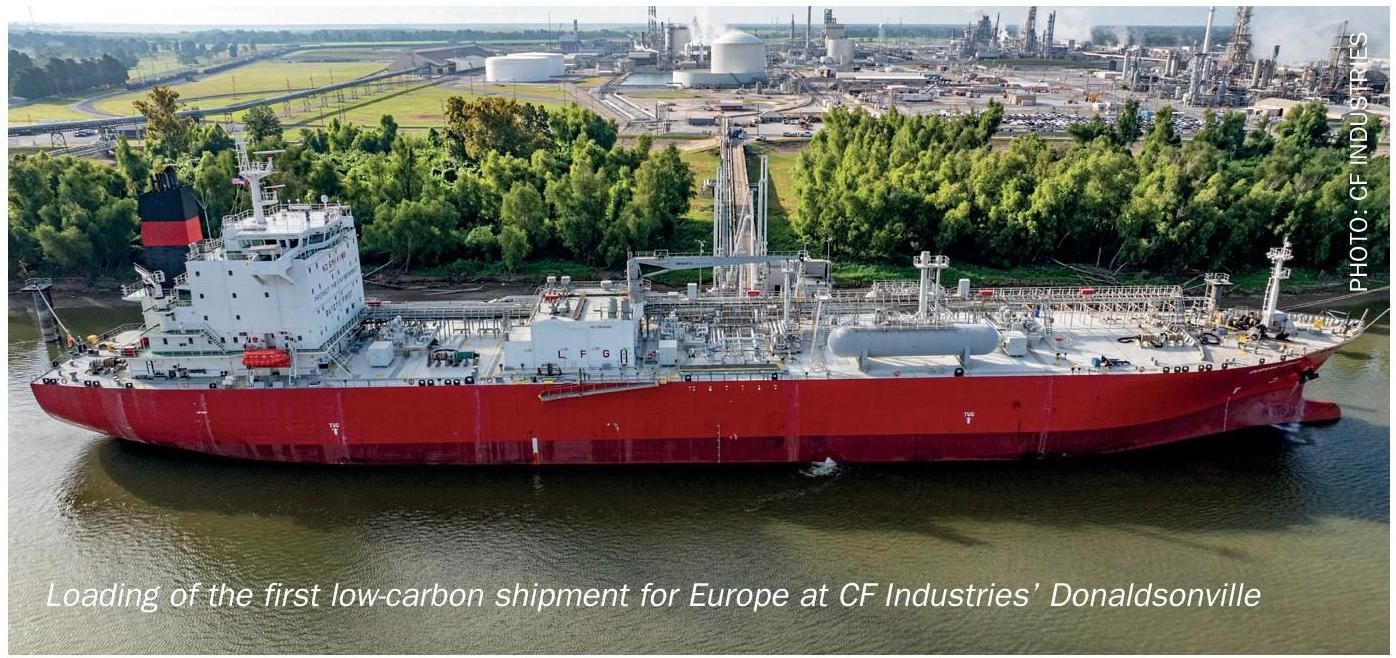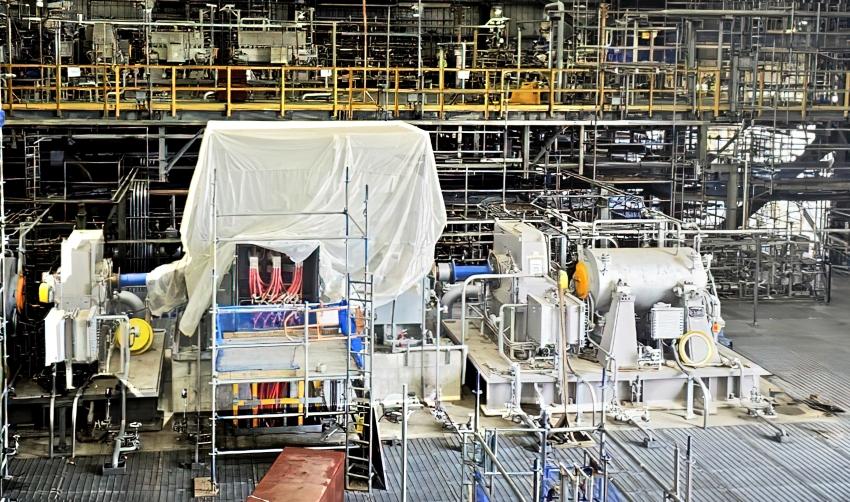Fertilizer International 528 Sep-Oct 2025

13 September 2025
What’s the best potash mining method?
POTASH MINING & TECHNOLOGY TRENDS
What’s the best potash mining method?
A model developed by ERCOSPLAN can help select the most efficient mining method for potash ore deposits based on a comprehensive evaluation of all the influencing factors, as Dr Henry Rauche and Thomas Kiessling explain.

Mining chamber in Germany’s South Harz Potash District.
Several types of natural resource form the basis for the production of potash fertilizers and other commercial potassium products including (Figure 1):
• Solid deposits of mineral salts in the geological subsurface
• Natural brines in natural salt lakes on the earth’s surface
• Pore waters in near-surface sediments.
While solid mineral salts can be highly concentrated – with potassium chloride (KCl) grades of 40% or more – natural brines have far lower grades of between 1-7 grams of potassium (K) per litre. The commercial use of such low-grade brines, therefore, is only economically viable where pre-concentration via solar evaporation is cost-effective.

Mining costs and economics
For all of these natural resources, potassium must first be extracted from the respective deposit, transported to the processing plant, upgraded/enriched by beneficiation with the harmful components removed, and finally refined into a saleable product.
Extraction costs usually account for between 5-25% of the total operating costs of potash fertilizer production. As might be expected, these costs are lowest when brines in natural salt lakes on the earth’s surface are the starting raw material. The same applies to capital costs. Ultimately, for both capital and operating costs, the comparative mining costs between different potash resources reflect the degree of technical effort required for raw material extraction and transport to the processing plant.
Key site- and deposit-specific variables
Depth underground is a cost factor of particular importance, especially for the extraction of solid mineral salts located underground, regardless of whether these are mined using conventional mechanical methods or by solution mining. In both instances, capital and operating costs are directly dependent on depth. That applies whether accessing the deposit via shafts to extract solid potash, or by the initial drilling of a brine field and then removing the dissolved potash ore via solution mining wells.
In addition, depth also determines the preparatory lead-in times necessary for greenfield potash projects – initial shaft sinking being a particularly lengthy process, for example – another important factor affecting economic viability. Underground temperature also increases with depth. This is an advantage for solution mining as higher temperatures increase potassium chloride solubility and, consequently, extracted brines will enter the beneficiation process with higher amounts of the valuable KCl target.
In contrast, for conventional underground mining the opposite is true. Higher temperatures require considerable additional expenditure on ventilation technology. This is necessary to ensure compliance with health and safety requirements for the underground workforce, and for adequate cooling of the equipment used. Additionally, as the load from overburden increases with depth, the dimensions of the supporting pillars left along the mining horizon also need to be larger. This increases mining losses unless the mine cavern is backfilled.
The upshot is that, beyond a certain depth, solution mining becomes both the technically and economically preferable option over conventional underground mining. There is no universal depth at which this applies. Instead, the exact deciding depth depends on a whole series of deposit- and site-specific conditions. These include geological factors, such as the thickness and shape of the mineralisation within rock formations and the grade of these deposits, as well as various socioeconomic and country-specific influences. An overview of the most influential deposit- and site-specific factors are shown in Figure 2.

Mining methods – what works best?
To an even greater extent, the geology of potash deposits determines extraction efficiency – i.e., the effectiveness of the mining methods and technical processes used to extract the natural solid ore from their rock formations underground. The ability to use either discontinuous drilling and blasting methods versus continuous partial-face or full-face cutting methods is particularly important here.
Continuous cutting extraction, especially full-face cutting, is an extremely effective extraction method – but is not always technical feasible. That’s because the dimensions of the continuous miner place strict limits on its flexibility and ability to cope with changes in the dip (angle) of the deposit and/or variations in thickness. Consequently, this method is only truly efficient where – like in midwestern Canada – homogeneous and largely horizontal potash deposits of consistent thickness are mined.
These same limitations apply to longwall mining. In general, varying dips, increases and decreases in the thickness of the deposit are completely unmanageable with both these mining methods, or lead to additional mining losses and/or a high degree of dilution in the mined ore. Likewise, solution mining does not function efficiently under such deposit conditions.
Potash mining by drilling and blasting, in contrast, can manage significant changes in bed dip and thickness, while also ensuring that the mining of waste rock from barren areas is avoided. This is a decisive factor, among others, explaining why this mining method continues to be used in Germany’s generally more geologically challenging potash deposits.
A new approach
For the conventional underground mining of potash, drilling and blasting can be economically superior to cutting extraction under certain conditions. A recent study by ERCOS-PLAN evaluated the various influencing factors that are faced in practice by potash projects when selecting the mining method. This involved developing a model based on equipment manufacturers’ data and ERCOS-PLAN’s extensive performance database.
The model compared the operating costs of three potash mining scenarios (Figure 3):
• Cutting extraction on one mining level (Scenario 1)
• Drilling and blasting on one mining level (Scenario 2)
• Drilling and blasting on two mining levels (Scenario 3).

For potash mining on one level (Scenario 1 vs Scenario 2), it was found that the seemingly unequivocal economic advantage of cutting extraction, which is evident at low energy prices, is no longer valid once a certain energy price threshold is exceeded (Figure 4).

Additionally, it becomes clear that if extraction by drilling and blasting on more than one mining level is possible (Scenario 3) – due to the deposit’s favourable thickness – extraction by benching from the upper mining level always delivers significant cost advantages (Figure 4). This is mainly because mined rock can be loosened much more effectively using explosives (Scenarios 2 and 3) than with electrical energy (Scenario 1).
It should also be mentioned that, as part of a comprehensive comparison of the economic efficiency of mining by cutting versus drilling and blasting, numerous other determining factors need to be evaluated. These include initial capex, the price volatility of explosives, and ‘soft’ factors, such as the skills requirements of employees and the corresponding costs associated with training and quality management.
Conclusions
The calculations made by ERCOSPLAN’s potash mining model clearly demonstrate that examination of all the influencing factors is worthwhile – and that deposit- and site-specific characteristics, as well as empirical data, must be taken into account when selecting the extraction method.
For a given potash project, preliminary selection of the mining method is not generally possible, in our view, without an engineering assessment on a case-by-case basis. Indeed, an engineering-based approach is arguably mandatory, as the most suitable extraction method is dictated by the diverse natural boundary conditions of individual potash deposits and/or those already created by humans at specific mining locations.
With more than 70 years of experience in potash extraction and processing, ERCOSPLAN is well-equipped to assist with the individual determination and evaluation of key influencing factors, from initial exploration to the final production of potash fertilizers.
Acknowledgment
Dr Henry Rauche is the CEO and Thomas Kiessling is the Managing Director of ERCOSPLAN. This article is based on a presentation given by Thomas Kiessling at this year’s CRU Phosphates+Potash Expoconference, Orlando, Florida, in April.
The call for papers for next year’s event in Paris, 13-15 April 2026, is now open: events.crugroup.com/phosphates/call-for-papers






